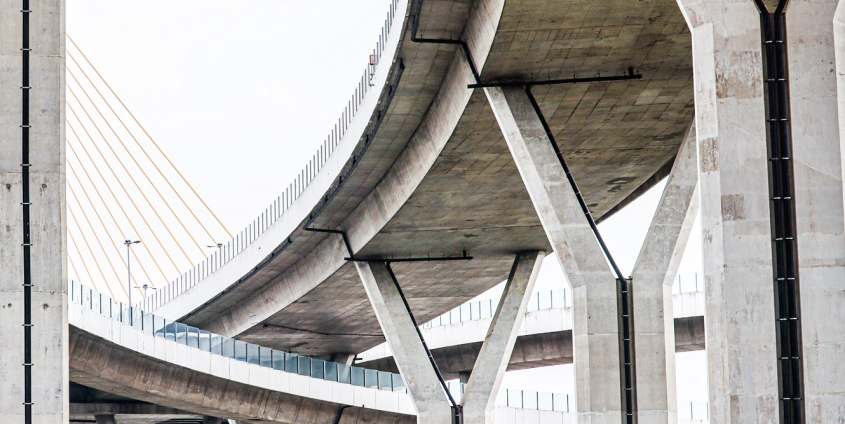To improve safety: Using swarms of drones to inspect bridges
The construction industry is also benefiting from digitalisation: BIM (Building Information Modelling) creates digital twins of construction projects, from planning to maintenance. To ensure that the condition of civil infrastructure such as bridges can be continuously mapped in the digital twin, it is planned to collect data from swarms of drones in the future. In a project funded by the Austrian Research Promotion Agency (FFG), researchers at the University of Klagenfurt are now developing a technology that will increase the reliability and robustness of inspection missions by swarms of drones.
“During bridge inspections, drones repeatedly enter GPS-shaded areas. However, we have to ensure that they still know where they are, can record data and coordinate with other drones,” says Roland Jung, who heads the RoMIng project at the Control of Networked Systems (CNS) research group at the University of Klagenfurt. When drones fly their missions autonomously, there is less need for pilot intervention. The resulting algorithm is designed to enable autonomous inspection missions involving swarms of drones.
According to Jung, swarms offer a number of advantages: “Not only can they fly around the bridges more quickly, but they can also support each other with localisation information.” For example, the swarm can dispatch individual drones to GPS-shaded regions as long as they still maintain contact with drones that have good GPS reception. The individual drone in the GPS-shaded area can additionally use image-based localisation methods to contribute further localisation information to the swarm.
“This kind of swarm multi-sensor state estimation will significantly enhance the robustness of the localisation during the mission, mutually remedy the weaknesses of the individual positioning sensors and provide much more precise data for the reconstruction and inspection of the bridge twin,” Roland Jung anticipates. The difficulty lies in the close interaction and merging of multiple sensors on one drone with the distributed information of the drones in the swarm to ensure consistent positioning of all drones at the same time.
Roland Jung is an early career researcher at the University of Klagenfurt. RoMIng (Robust Multi-Agent State Estimation for Infra-structure Inspection in GPS Disturbed Areas) is the first research project he is heading. The project is funded by the Austrian Research Promotion Agency FFG. The project partner is the company SDO ZT GmbH Architekten & Ingenieure (SDO).










 R3nder/Adobestock
R3nder/Adobestock
